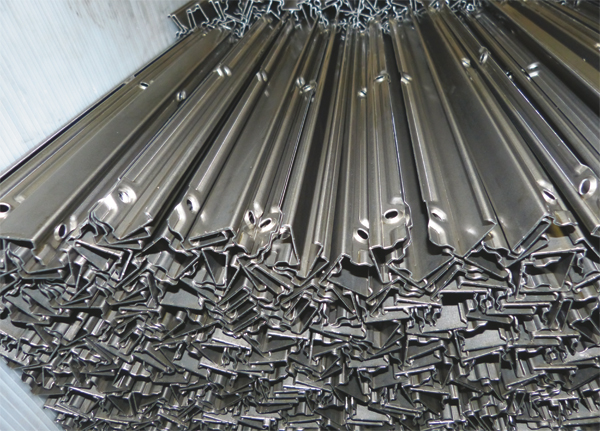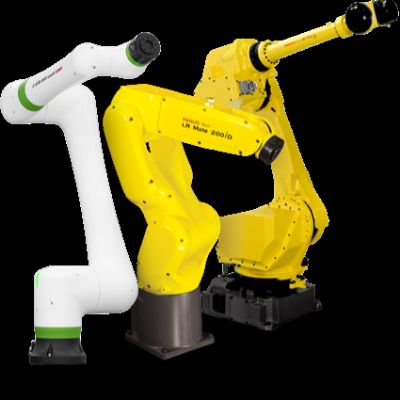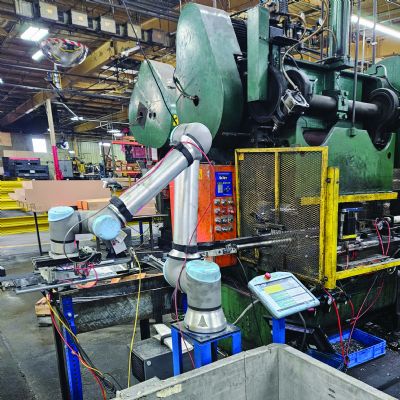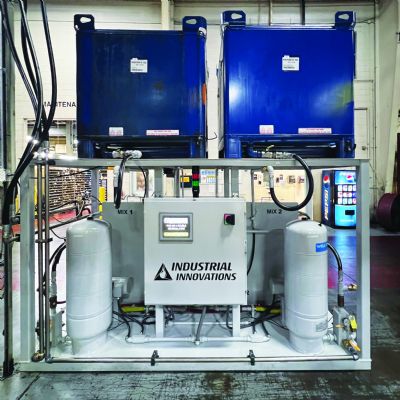In addition to focusing on improving the quality of its stainless-steel stampings, as noted above Miller and his peers have long-sought a better solution to managing consumption of die lubricant.
“In 2000,” recalls Miller, originally hired as a toolmaker at the company in the 1980s, “we installed our first automatic roller-style lubrication units on one of our presses. This four-roll unit (a UniRoller Type C, from Unist) was our first attempt at applying lubricant to the top and bottom of the strip.”
Compared to using felt wiper pads to drip oil onto the strip, the roller-style system represented a big step in the right direction. Lubricant pumps evenly through a dispenser tube inside the rollers and transfers to the stock through polyurethane-foam or polyester-felt roller covers.
A drawback to the system, notes Milller: Adjusting the unit to alter lubricant flow from job to job requires an operator to turn a knob to adjust a plunger on a cam that controls the mount of fluid that goes into the rollers. “And for some reason, we struggled to consistently build that adjustment procedure into our job-changeover routines at the presses,” Miller says. “As a result, we knew that on most of our jobs we were using more lubricant than was needed. And, we also had that lingering and costly issue of poor-quality paint jobs on our track stampings.”
Options: Spray, or Adjust the Cleaning Solution
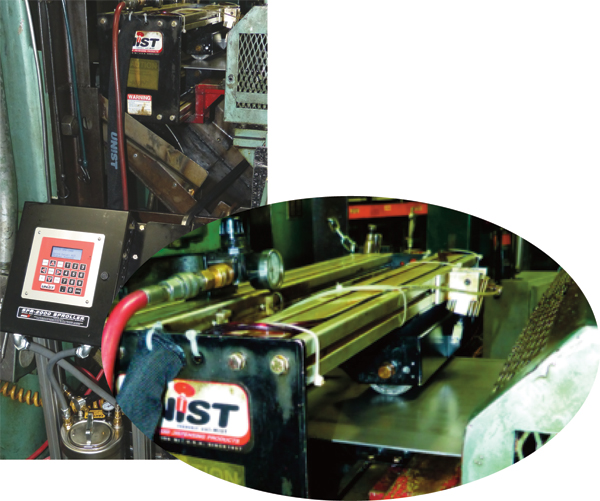 |
| One of the 11 progressive-die press lines Truth Hardware outfitted with a pumpless and programmable lubricant-delivery system. The upgrades are expected to reduce lube consumption by 30 percent, while eliminating paint defects caused by excess lubricant. |
Why not just tinker with the cleaning method used to wash oil from the track sections? “We use the same cleaning process on zinc die-cast parts and on uncoated steel stampings,” says Miller. “Any adjustments made to make the cleaning solution more aggressive for the uncoated steel parts would have caused defects in the zinc. So, we opted to maintain a balanced cleaning solution that works for zinc and uncoated parts.”
Miller also tried using a spray-application process, but found the lubricant the company uses simply would not spray well. “We’ve standardized throughout the plant on a fairly viscous lubricant—Sulf-O-Cut 1200 (supplied by Lube-Tech, St. Paul, MN),” says Miller. “We use the same lube on stainless steels and on mild and HSLA steels, and we just could not get it to spray evenly.”
Sulf-O-Cut 1200, according to Lube-Tech literature, is a “medium-viscosity heavy-duty neat oil blended from severe hydro-treated base stocks containing varying combinations of synthesized sulfur and fat additives.” The fluid carries a kinematic viscosity rating of 46 cSt at 40 C.
A Scientific Approach
Thinning out its lubricant film ultimately required a renewed commitment to tighter process control, and a scientific approach to deciding just how much lubricant to apply. This next step in Truth Hardware’s stamping-lube evolution began in 2006 when Miller (with the help of Peter Danzer from Press Line Industries, Inc., Farmington, MN) decided to convert one of the UniRoller Type C systems over to a Unist UniRoller Type S system, equipped with Unist’s SPR-2000 programmable controller. The Type S unit replaces the standard plunger/cam-style lubricant pump used in the Type C units with a fitting that enables fluid lines to connect directly to the controller.
Having evaluated the setup for a couple of years, the firm converted a second press in 2008 and a third press in the fall of 2011. During the first half of 2012, the remainder of the firm’s 11 prog-die presses were converted. Ever since, not a single track stamping has been scrapped due to paint defects. And, lubricant consumption is expected to drop by at least 30 percent.
“Every time we set a new die, the operator only has to call up the appropriate lubrication program at the SPR-2000 control console,” says Miller. “There’s no need for him to go to the press and turn any knobs or make any adjustments. The lubrication programs we’ve developed manage the key variables—lubricant pulse duration (how long the lubricant flows into the system’s rolls) and cycle count (how often the valves open to allow the lube to flow).”
Miller created 60 different lubrication programs using various combinations of cycle rate and pulse duration. He did so having settled on a standard lubricant flow rate of 4.3 cc/sec., a line pressure of 40 psi, and a film thickness of 3.6 microns. Minimum pulse duration is 0.05 sec.
“We decided to develop a new program for every 2-sq.-in. variation in coupon size,” Miller says. Coupon size is calculated as strip width x progression x 2 (to accommodate application of lubricant to both sides of the strip. He created a spreadsheet for calculating surface area and to keep track of all of its tools and their accompanying lubrication programs.
A scientific yet simple and very effective approach to not only improving quality but also to reducing lubricant consumption—a worthy goal for any metalformer. MFIndustry-Related Terms: Alloys,
Cam,
Die,
Form,
Hardware,
Lines,
Run,
Scrap,
Surface,
Thickness,
ViscosityView Glossary of Metalforming Terms
See also: Unist, Inc.
Technologies: Lubrication







